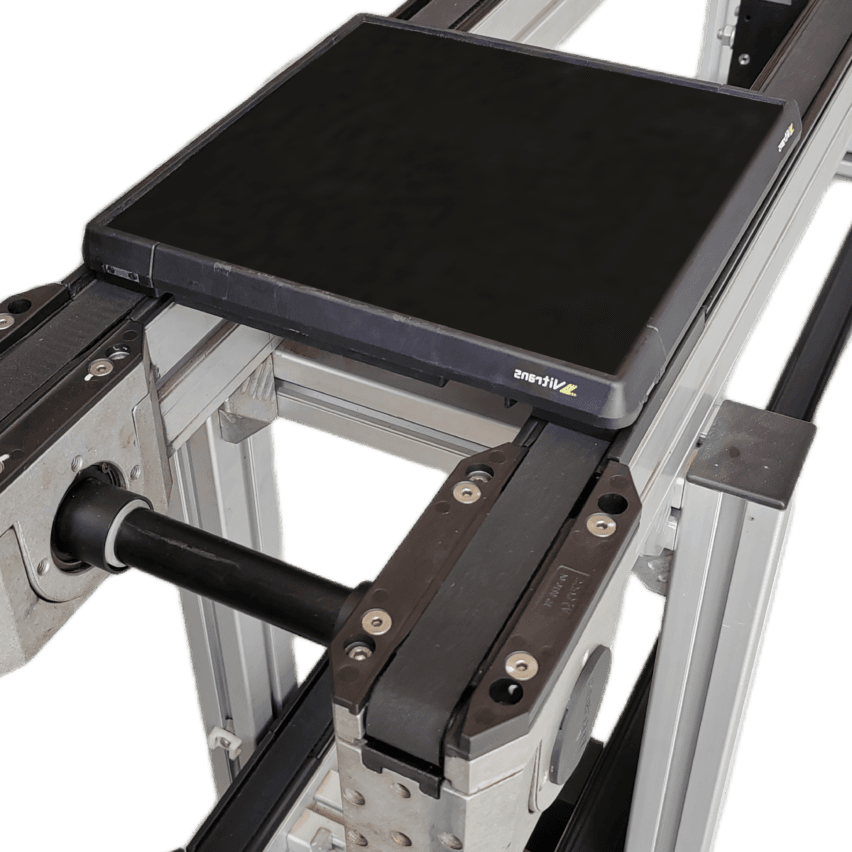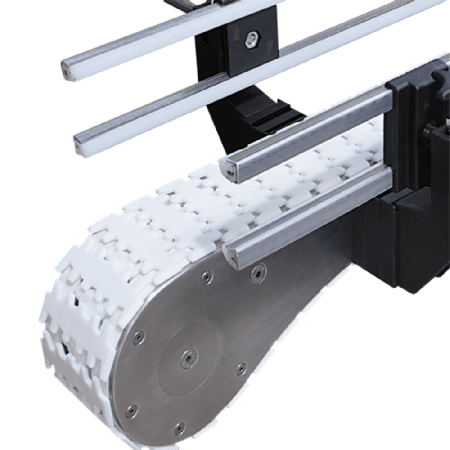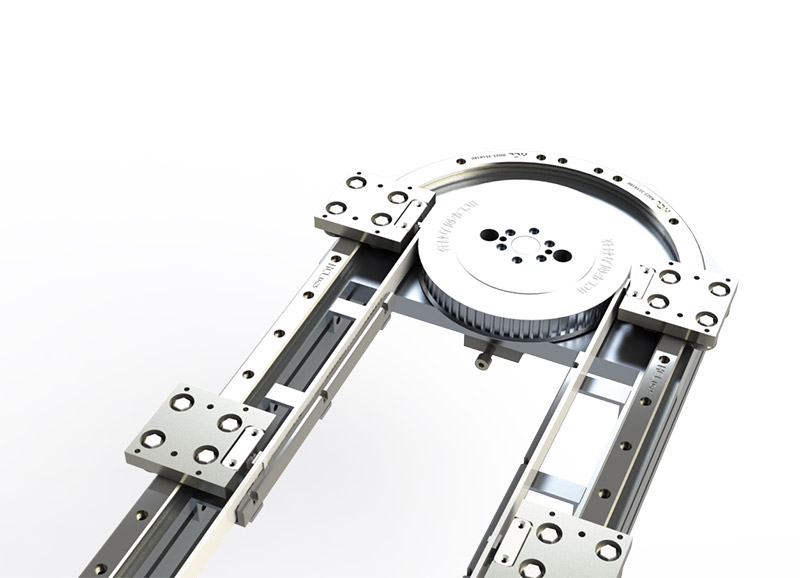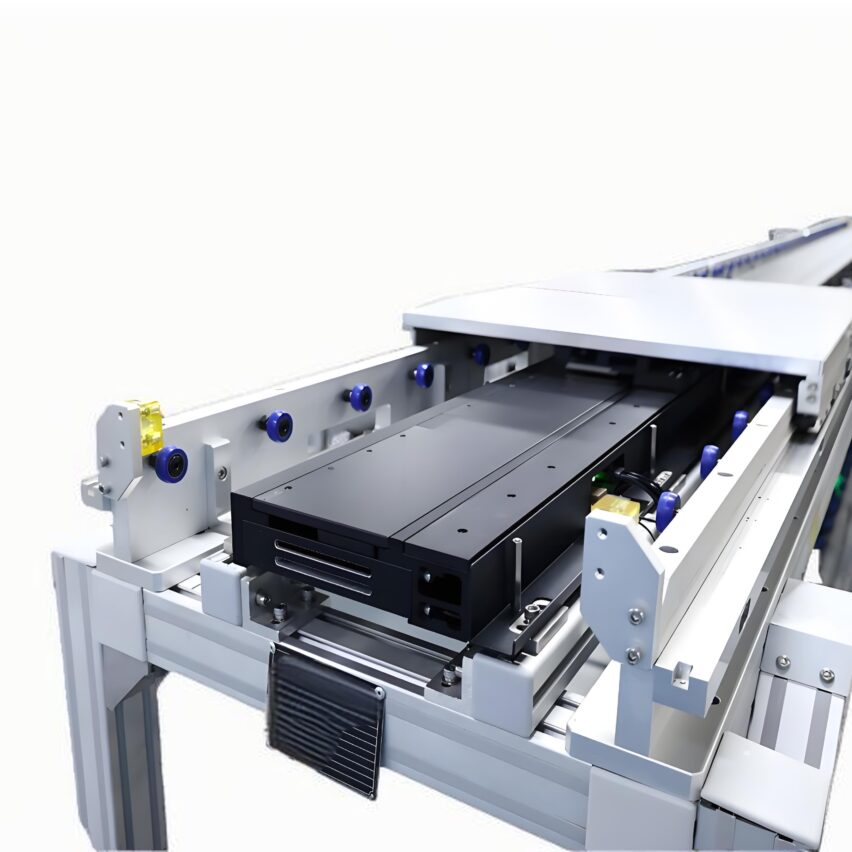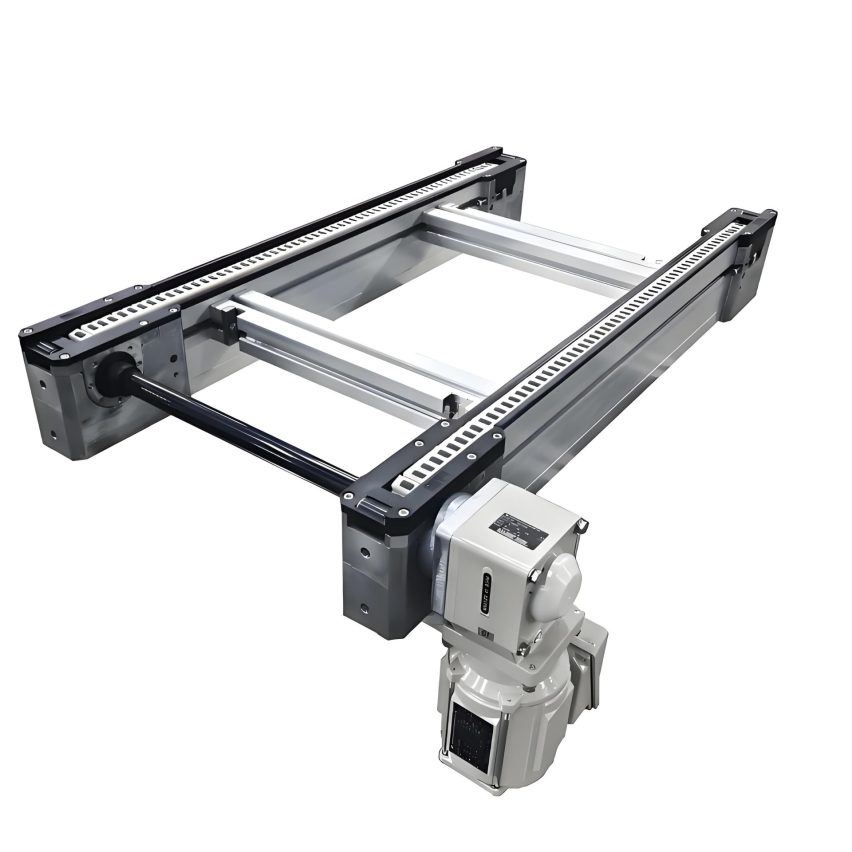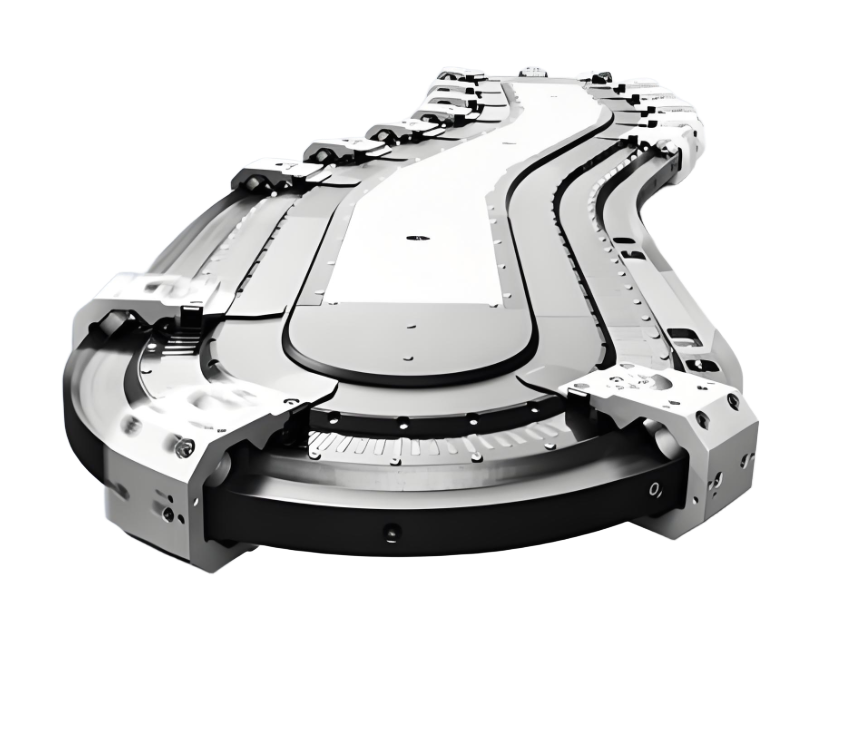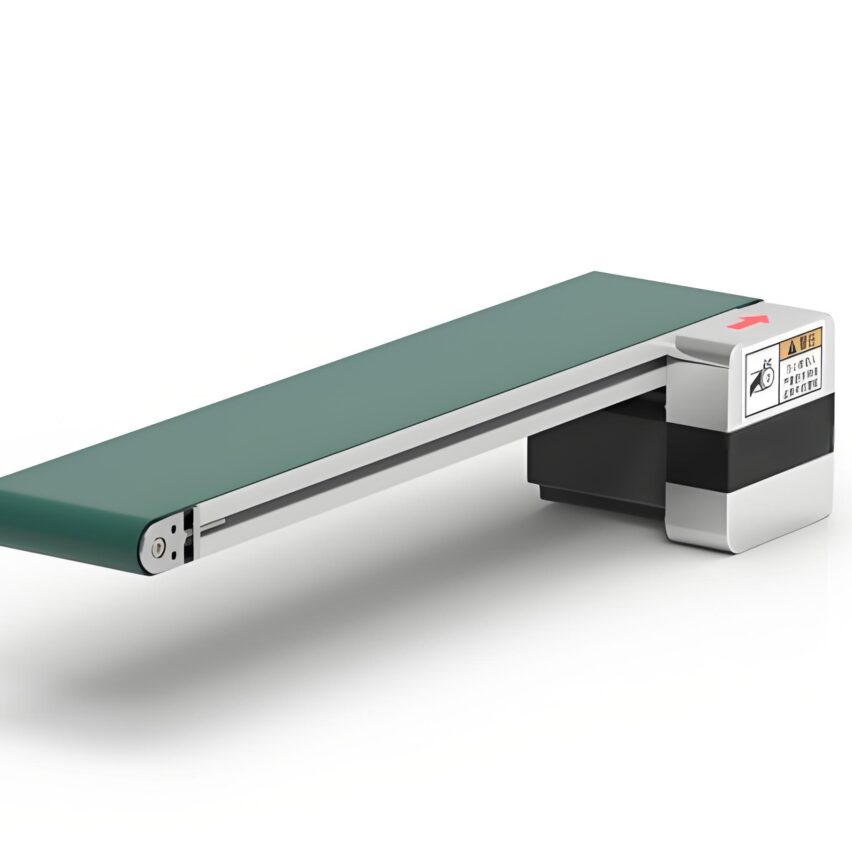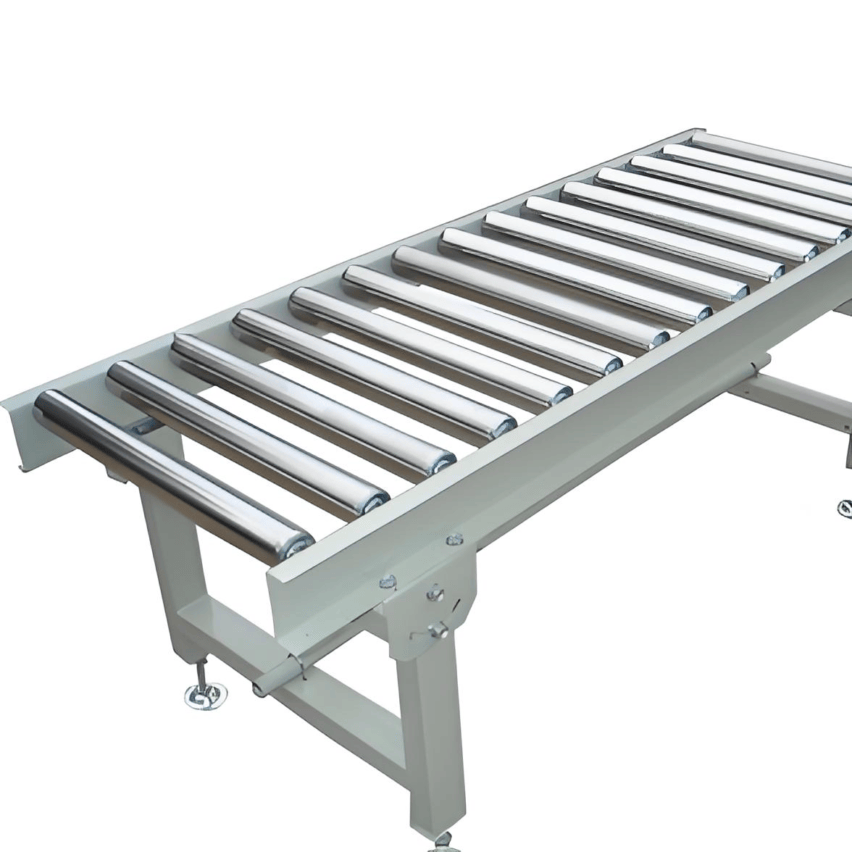I. Light load and heavy load choose wrong? 3 parameters precise lock type
Core formula: WA(kg/m) = (Workpiece weight W1 + Pallet weight W2) / Pallet travelling distance PL
-
Light-duty scenarios (electronics/small appliances)::
- Load ≤500kgEngineering nylon chain, anti-static and noise ≤60dB.
- speed matching: 3 times the speed of the chain + 5-15 m / min frequency conversion speed (example: mobile phone motherboard line speed up 3 times)
- Deadly Misconceptions: Over 500kg with nylon chain → roller deformation jamming, yield rate plummeted 30%!
-
Heavy-duty scenarios (automotive/machinery)::
- Load ≤4000kg: Hardened alloy steel chain + wide body guides (3 tonne single point load case)
- speed control: 2x speed chain + ≤ 8 m/min low speed (example: engine block handling steady as a rock)
- lesson learnt through blood and tears: 3x speed chain for heavy loads → risk of chain breakage surges 50%!
Parameter quick reference table
take Chain material octave ratio speed range Motor power electronics assembly Engineered nylon 3x speed 5-15 metres/minute 0.5-2kW Automotive parts and components Hardened alloy steel 2x speed 0.5-8 metres/minute 3-5kW Food packaging 316L stainless steel 2.5x speed 1-10 metres/minute 1.5-3kW Data synthesised from industry standards
Second, the essence of the operation of the 3-fold speed chain: how to save power and speed up the differential speed effect?
physical principle: Roller diameter D > Roller diameter d →V Workpiece = V Chain × (1+D/d)
- Power Saving Mystery: Chain running at low speed (2m/min), work plate 3x speed (6m/min), motor power consumption reduced by 40%
- Accuracy Guarantee: Self-flowing conveyor + pneumatic stopper, positioning error ≤ 0.5mm (90% higher than manual precision)
Real pain points: Why is the actual speed of my 3x chain not up to par?
→Friction Loss Eat 30% Efficiency! Solution:
- Electrophoretic treatment of guide rails reduces the coefficient of friction
- Monthly lubrication with lithium-based high-temperature resistant grease
Third, the cost of selection errors: these pits waste millions of maintenance fees each year!
Case 1: Misuse of steel chains for light load lines in an electronics factory → Result:
- Excess motor power (3kW→actually only 1kW), annual power loss of ¥80,000
- Steel chain electrostatic adsorption of dust, chip pollution scrapped ¥ 230,000 / year
Case 2: Wrong choice of 3x chain for heavy-duty lines in car factories → result:
- Load exceeds the standard 30% → chain breaks 2 times a month, loss of ¥500,000/time for production stoppage.
- After replacing with 2x speed chain + servo positioning, the fault returns to zero
Cost formula: Loss of wrong selection = Loss of production stoppage + Spare parts cost + Wasted energy + Loss of yield
A car company corrected selection after the annual savings of ¥ 2.1 million
Four, five-step accurate selection method: white can also avoid the pit
Step 1: Counting the load
- Total weight of workpiece + pallet (example: engine 500kg + steel pallet 200kg = 700kg)
- safety threshold: Actual load ≤ Nominal value × 80% (Example: Nominal 1 tonne chain → Maximum load 800kg)
Step 2: Environmental Adaptation
- High-temperature workshop → hardened alloy steel chain (600°C resistant)
- Wet environment → 316L stainless steel chain (corrosion resistance +20%)
Step 3: Match the tempo to the beat
- the beat equation (math.): Line speed (m/min) = station spacing (m) × 60 / beat time (s)
(Example: station distance 1.2 metres, beat 30 seconds → speed = 1.2 x 60/30 = 2.4 m/min)
Step 4: Golden combination of drive systems
| take | Motor type | transmission method | position accuracy |
|---|---|---|---|
| High speed with light load | aerodynamic | 3x Chain | ±1mm |
| Heavy Duty Precision | Servo motor + reducer | 2x speed chain + timing belt | ±0.5mm |
Step 5: Maintenance-free design reduces costs
- Food-grade self-lubricating chain (5 years maintenance-free, save ¥ 120,000 / year labour)
- RFID tooling board tracking: pre-judge the replacement cycle, the failure rate down 70%
V. Intelligent Upgrade: How to Re-Enhance the 3x Speed Chain 200%?
Dynamic speed control systems: Photoelectric sensor real-time monitoring of clogging → automatic speed reduction to prevent accumulation (a plant capacity +40%)
Magnetic Levitation Speed Chain (FTS)::
- Individual magnetic drives for tooling boards at speeds up to150 metres/minute(Traditional 4x)
- Aerial merging and diverting, eliminating the need for jacking and panning machines (capacity of a battery plant +200%)
Exclusive views: For the next three years."Chain + AGV" hybrid lineWill become mainstream (headline penetration 87%)
→ Localised speed chain fixed-point assembly + AGV flexible transfer, return on investment reduced to 8 months!
Data corroboration: After a car company amended its selection -
- Light load area with nylon 3 times the speed of the chain: electronic parts assembly speed up 3 times, annual savings of ¥ 150,000 in electricity costs
- Heavy load area for steel 2x speed chain: failure to zero, maintenance costs from ¥ 2 million → ¥ 0
Efficiency improvement starts with accurate matching, rather than blindly pursuing "high-speed" labelling.


